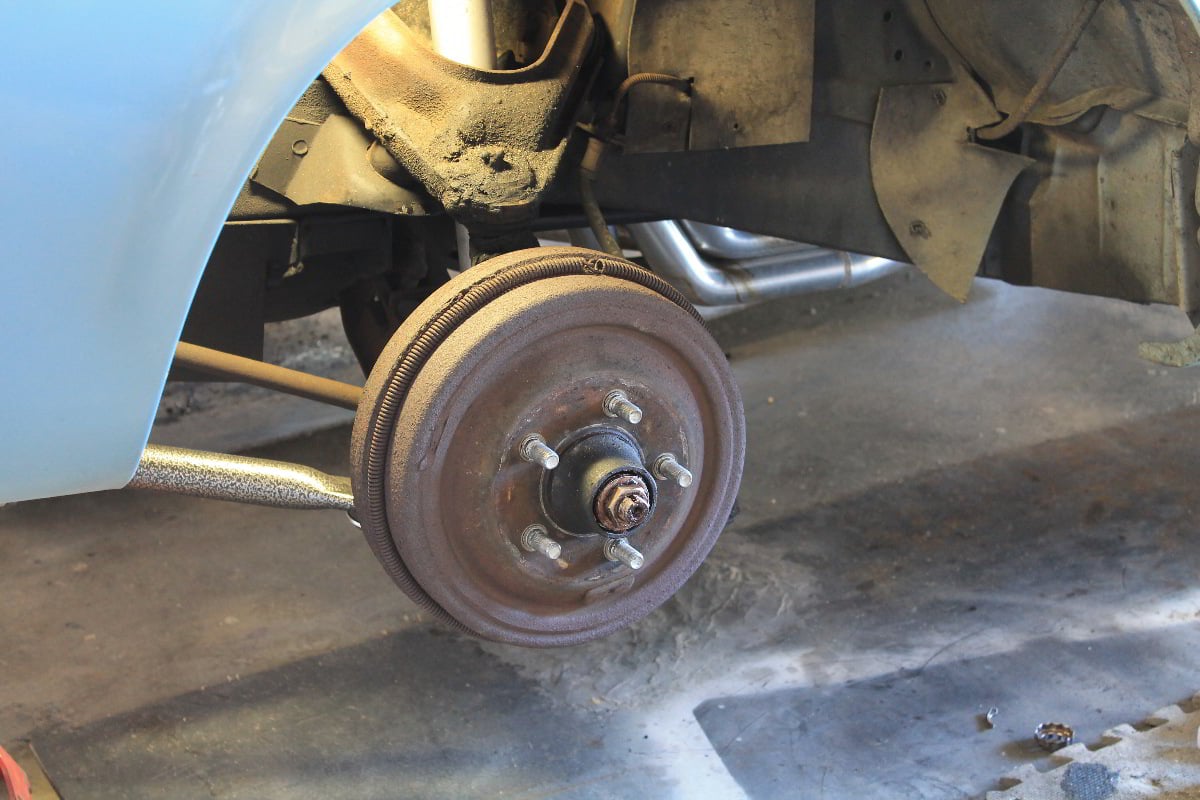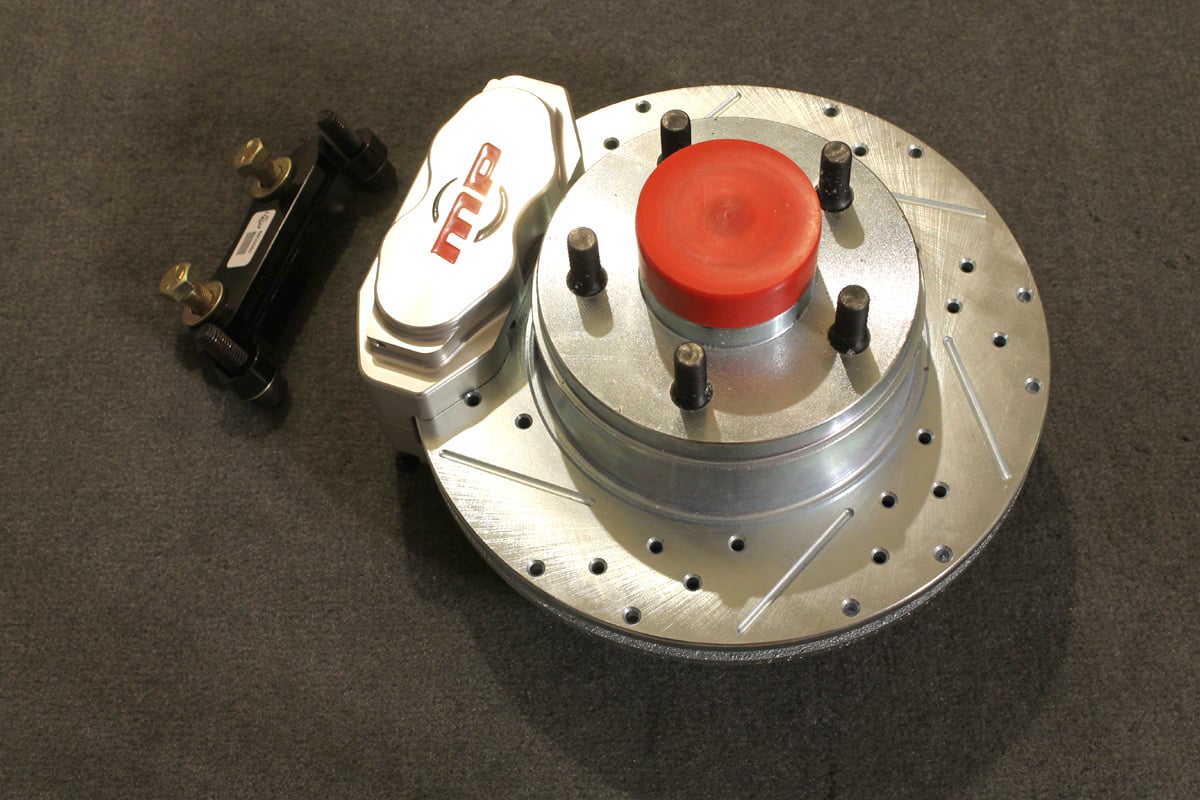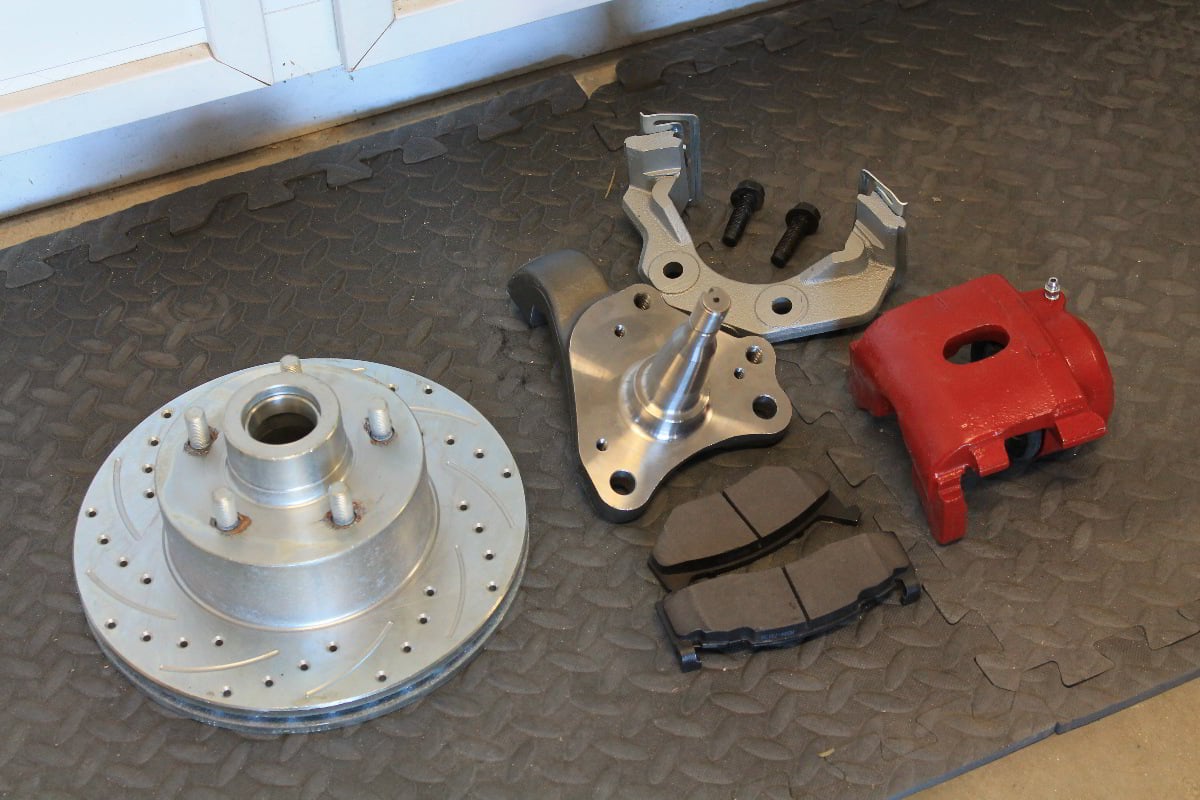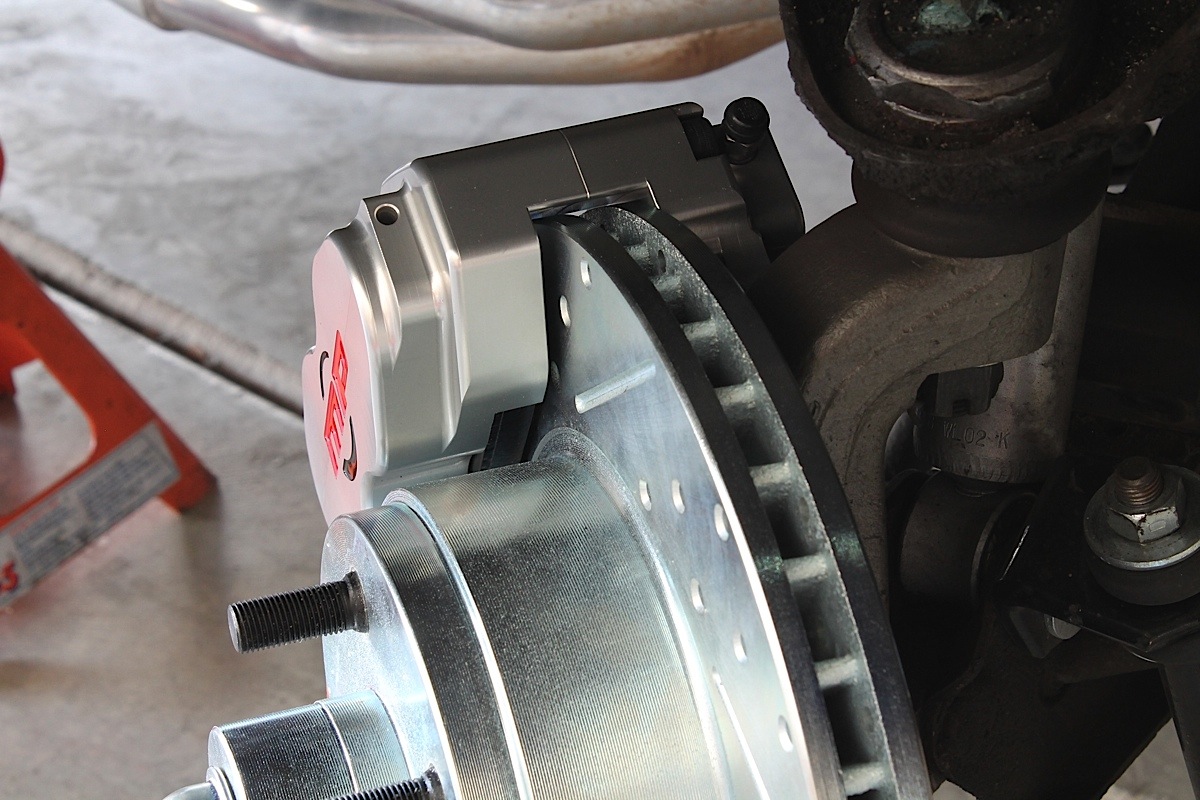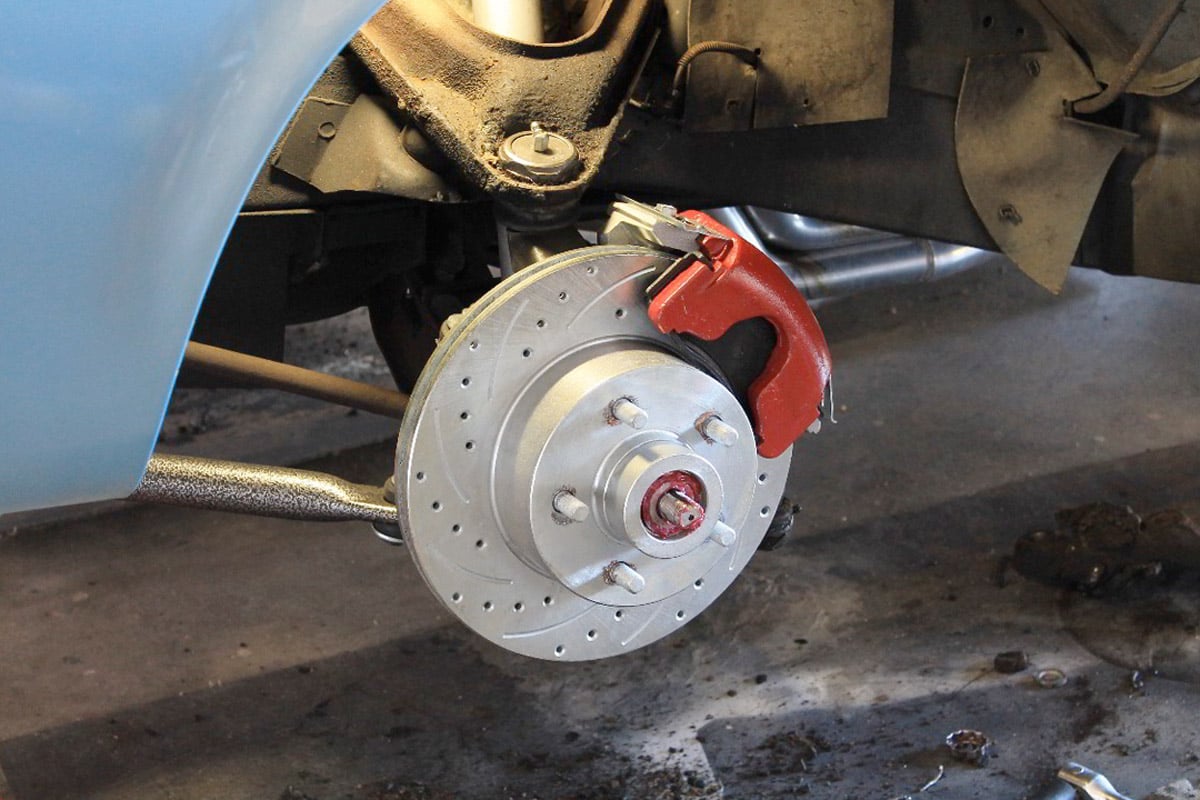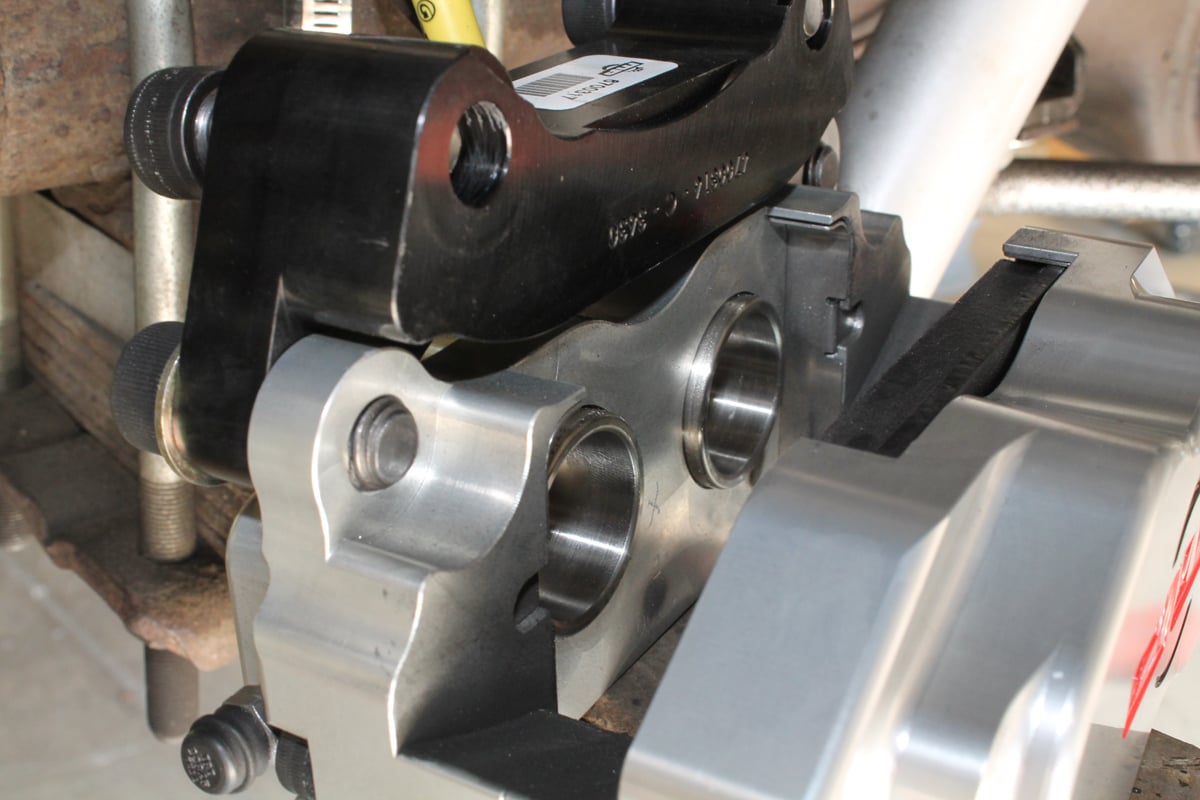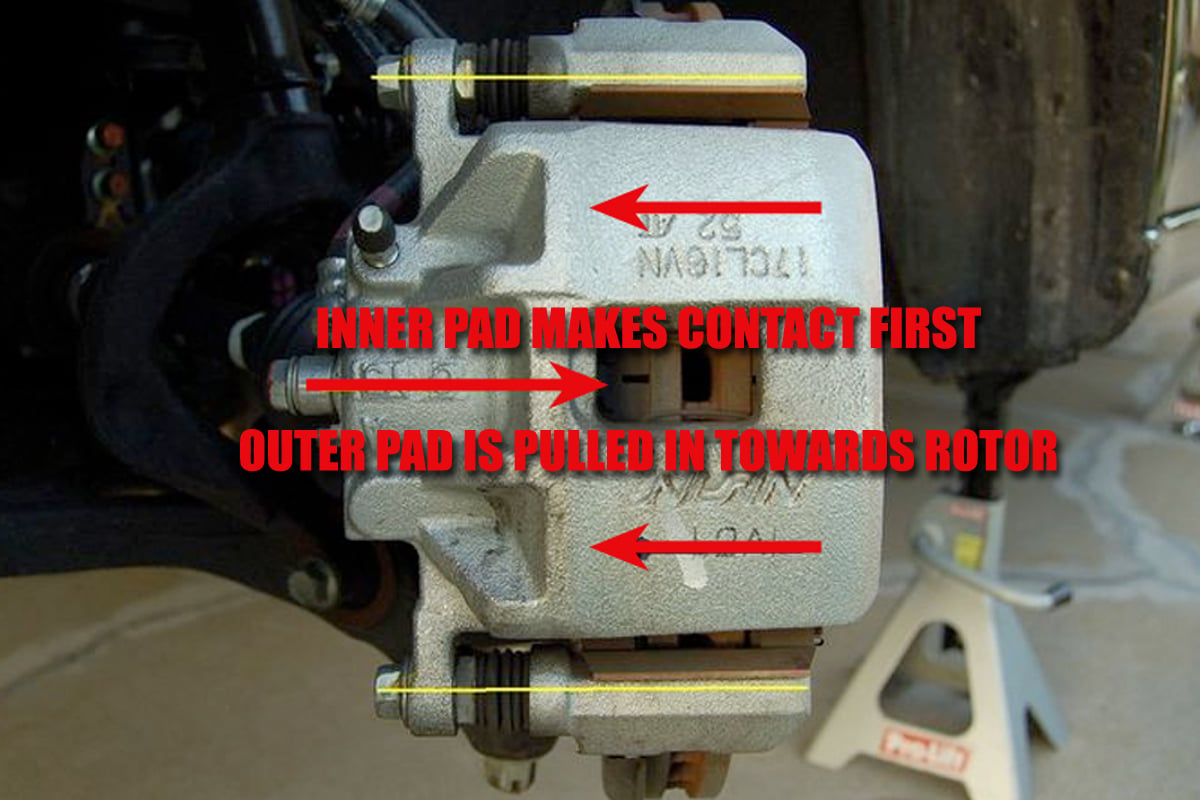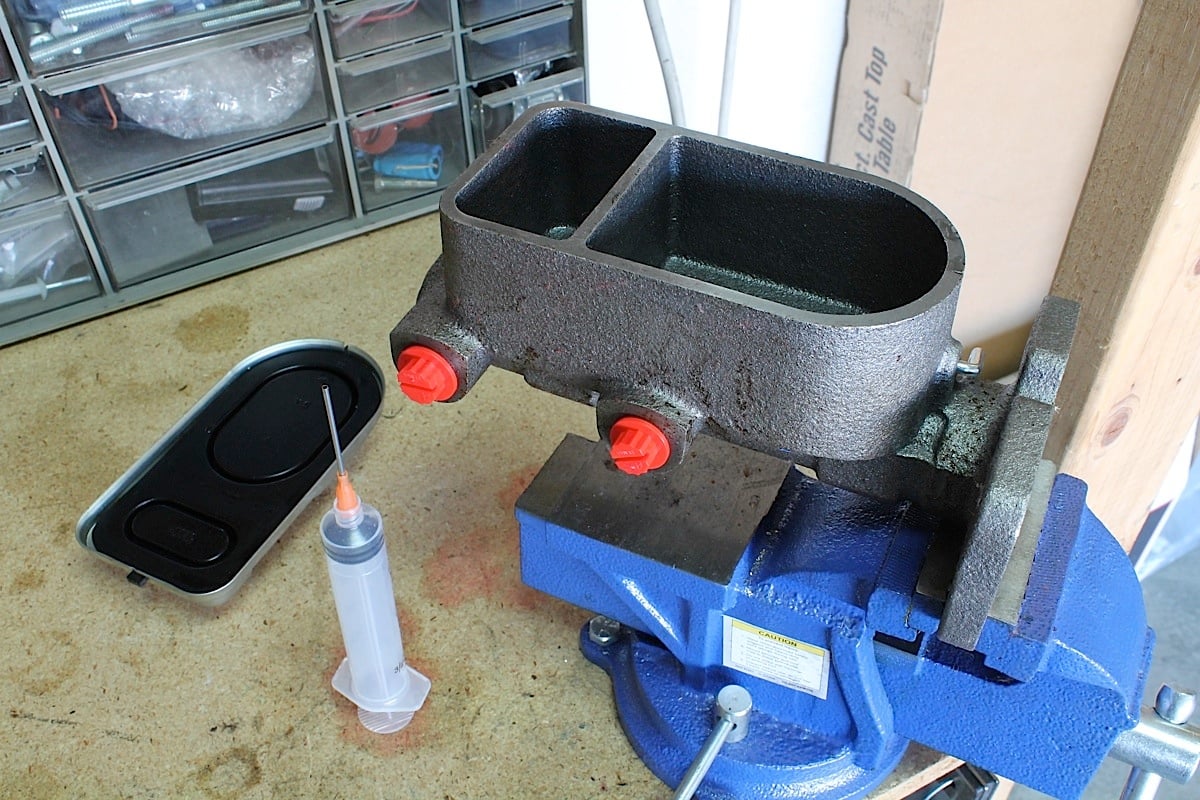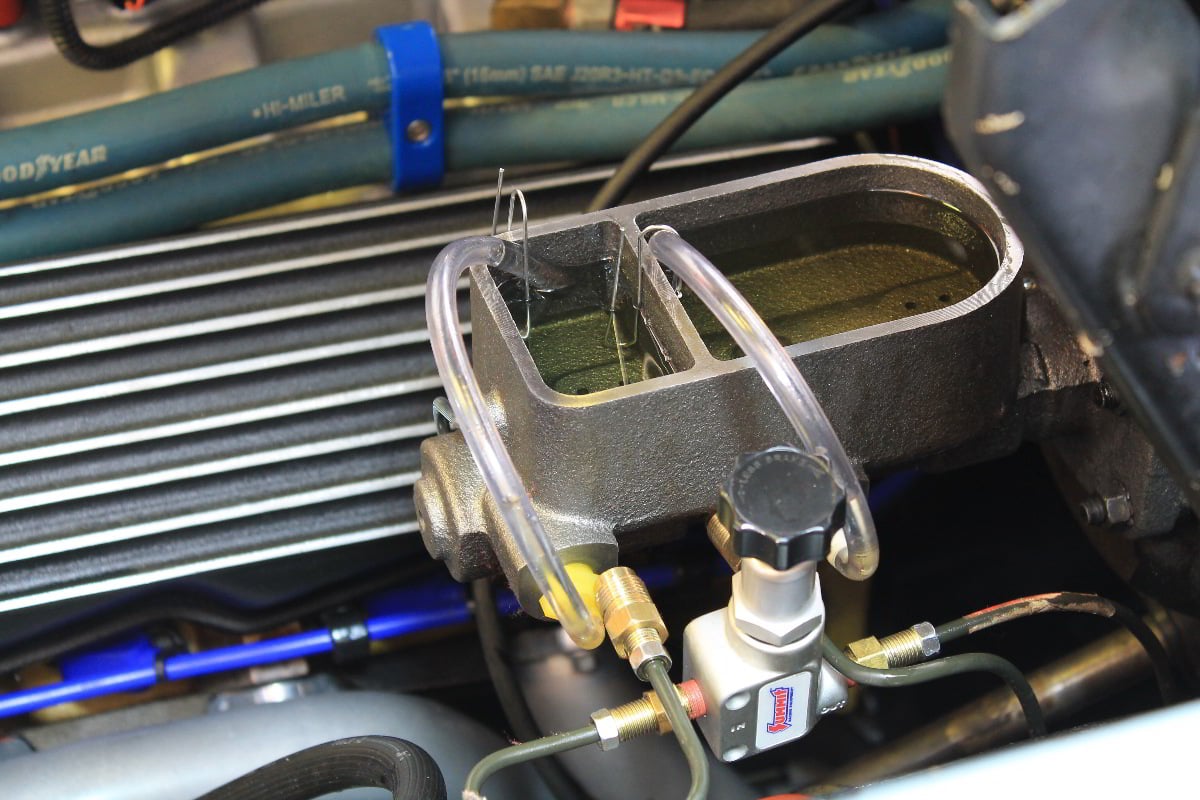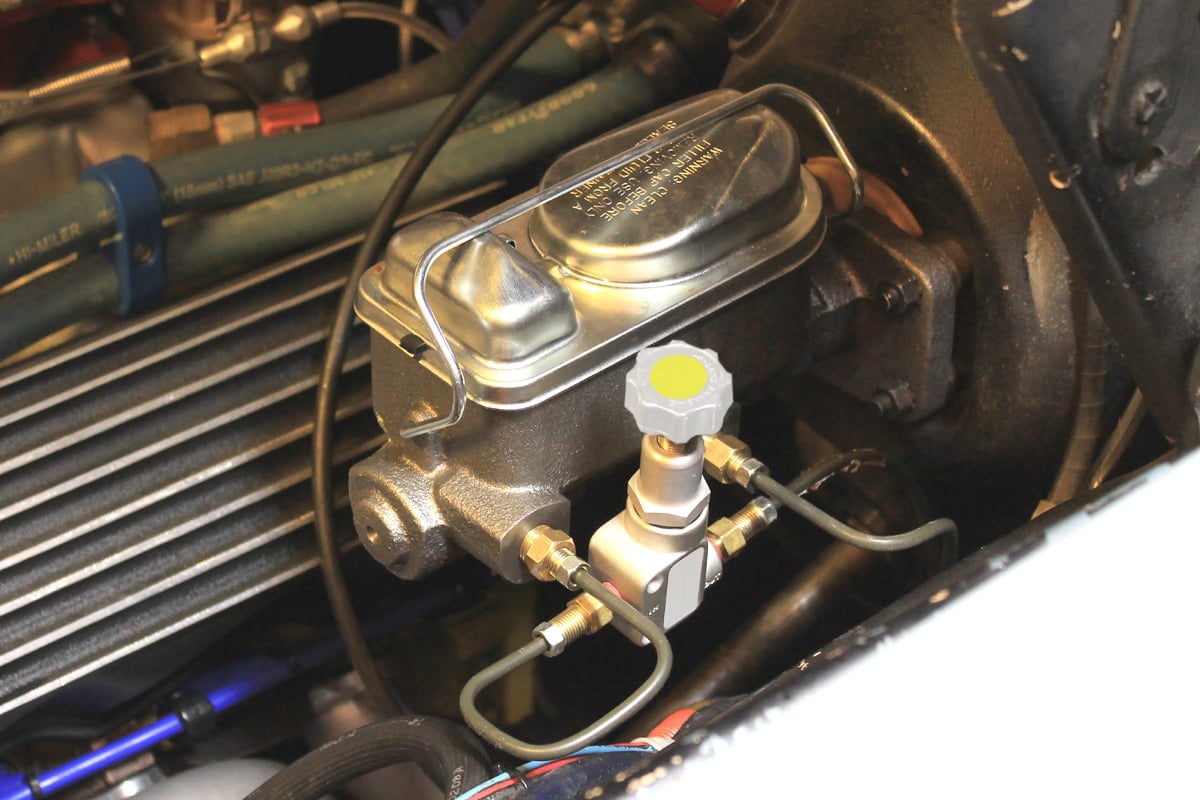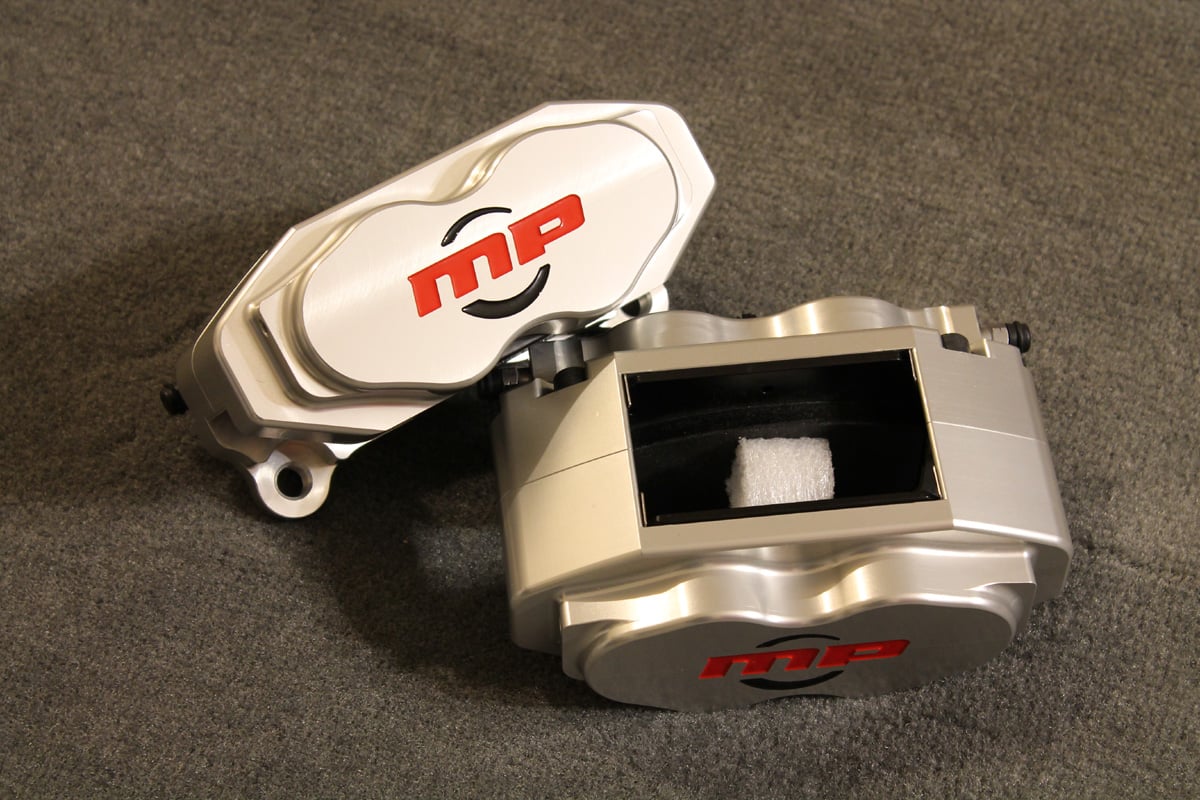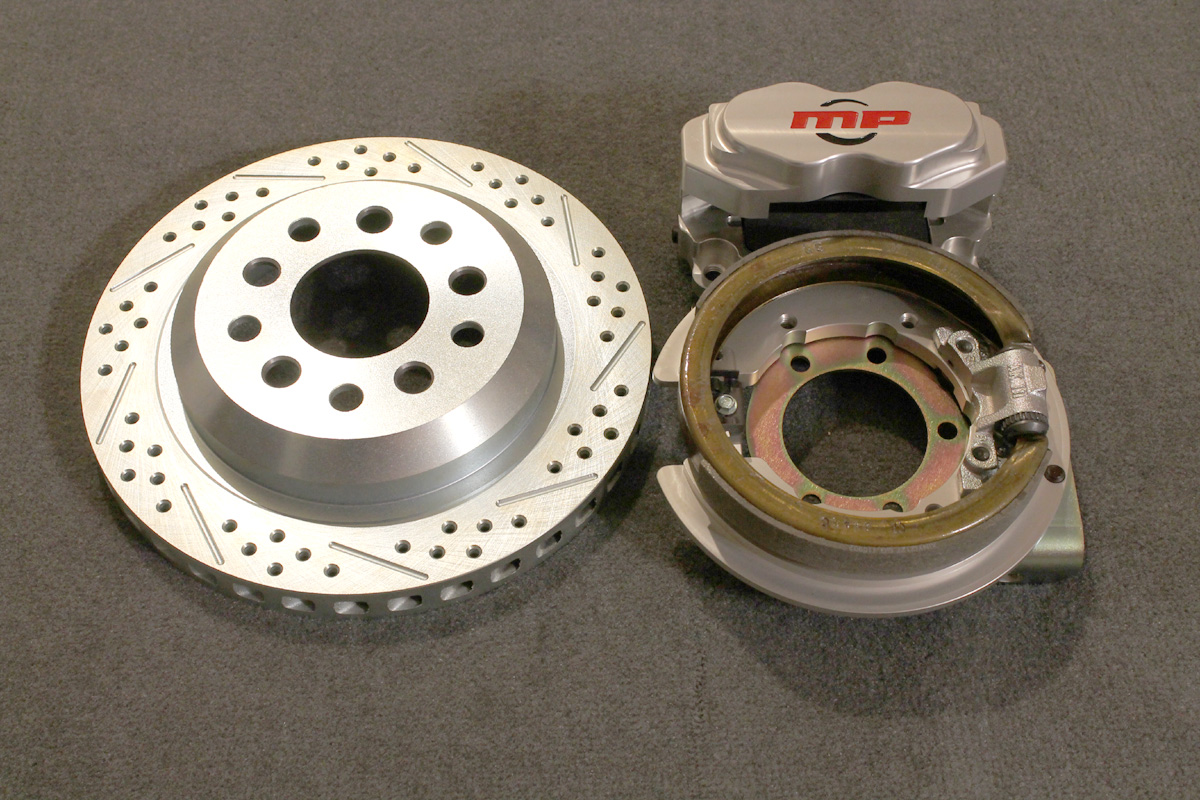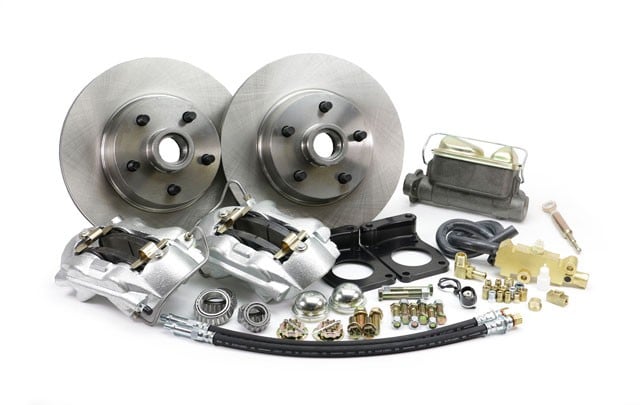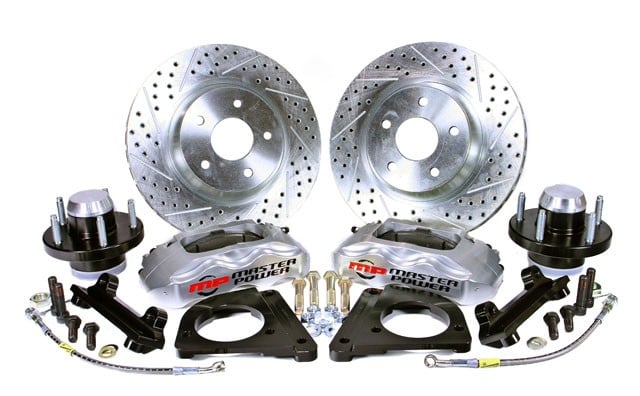 So you’ve made an upgrade to the braking system on your vehicle. Whether it was a drum-to-disc conversion or going from existing discs to something larger, you have made a step in the right direction to better stopping and better control of the vehicle during a stop.
So you’ve made an upgrade to the braking system on your vehicle. Whether it was a drum-to-disc conversion or going from existing discs to something larger, you have made a step in the right direction to better stopping and better control of the vehicle during a stop.
But your work is not done at that point. Most people think the next step required is a pad change once they have worn out and start making noise. A brake system is no different than any other system within the vehicle, it requires regular maintenance and inspection of caliper parts, such as pistons, seals, and pads. Mark Chichester at Master Power Brakes helped to explain why.
Fixed Vs. Floating Calipers
A brake caliper is not a difficult part to install. There are obviously moving parts and how those parts work as an assembly is important to understand when it comes to the maintenance of the brake system. There are two basic types of calipers: there is a fixed mount caliper and a floating mount caliper. Both do the same job in squeezing a brake rotor but each goes about its work in slightly different ways.
Getting rid of those old drum brakes is the first step in the right direction.
For street driving and therefore most OE applications, a floating caliper is the most commonly used type of brake system today. A floating caliper is a completely acceptable braking system and performs quite well. With a floating caliper, the outside pad is pulled towards the brake rotor as the caliper slides on pins, but this happens only after the inner pad is pushed and makes contact with the rotor. As you can guess, the inside pad makes contact before the outer pad does.
From a manufacturing standpoint it’s easier to handle, requires less pinpoint accuracy, and also is less prone to noise from the pads. If anything, floating calipers have more moving parts; when inspecting them it’s important to make sure there is no corrosion or binding when the caliper slides on the caliper pins.
For performance driving, the added benefits of a fixed caliper braking system will be noticeable. Many of us upgrade to a fixed caliper braking system in a performance application because it is more effective than a floating caliper. A fixed caliper, when installed properly, will push both brake pads to the rotor equally, applying the same amount of pressure to both sides of the rotor at the same time. Since the caliper doesn’t move, both brake pads tend to wear more evenly.
Chichester said, “None of this is to say that a floating caliper should never be used. The OE manufacturers today still use a floating caliper.” MP Brakes provides floating caliper kits for OE-style brake upgrades for hundreds of vehicles, as well as a fixed-style caliper upgrade for performance applications.
Floating calipers will push the inner pad, and pull the outer pad. Fixed calipers push both outer and inner pads at the same time.
Fixed Caliper Maintenance
A fixed caliper, however, requires an extra step that is not required with floating calipers: centering the caliper. When performing maintenance or replacing pads, for instance, if you simply bolt the fixed caliper to the spindle without centering it, then you’ve done it wrong. You could experience some level of wear within the system that has changed the relationship of these parts, along with slight variations in the thickness of pads.
The smart move is to at least check that the caliper is still centered. You may be able to slap things back together and everything will be good, but in an effort to get the most from your brakes it is a worthwhile few minutes. In order to get equal pressure from both pads, they need to travel the same distance because pressure is applied at the same time from both sides of the rotor. If one pad is closer to the rotor, it will apply pressure first and that can cause uneven wear.

If the caliper isn’t centered using shims, you could get uneven pad wear, as well as braking problems.
Shims are used to center the caliper, and Chichester warns, “The one thing that needs to be remembered is to make sure the shims don’t get removed from the bracketry when doing maintenance or removing the calipers. It is much easier to check things from where they were rather than completely starting from scratch.” He stated that fixed calipers don’t require more maintenance than a sliding caliper, but things do need to go back together properly.
Brake Fluid Ratings And Changing Fluids
Now that you know a little more about the differences that can exist from one system to another and how that affects what is done with maintenance, there is one more thing that needs to be looked at. Chichester wanted to point out that people tend to ignore changing their brake fluid on a regular basis. He said, “Brake fluid should honestly be changed once a year. Nobody ever seems to fall within that guideline. We change the engine oil regularly but completely disregard the other systems within the vehicle.”
New master cylinders need to be bench bled, either on or off the car, before connecting to the rest of the brake system.
The recommendation to change brake fluid in a street driven vehicle is once a year. “For cars that are seeing more extreme use, I would recommend it happen twice a year,” he said. He mentioned that we often tend to let things slide and not change fluids when we should, but old brake fluid can become contaminated. It’s possible to get moisture in the master cylinder from changing temperatures, and water will break down the brake fluid. Inspecting the fluid is also a part of the recommended maintenance between fluid changes.
Master Power Brakes recommends Pentosin Super Dot 4 Brake Fluid, which is a full synthetic brake fluid. When it comes to DOT 3 and DOT 4 brake fluids, they are often listed as compatible when they are both glycol based fluids. It’s not recommended to mix a glycol based with a synthetic. A quick point to remember is that a car using DOT 3 can receive DOT 4, but a car using DOT 4 should never go backwards to DOT 3.
There are many factors that prevent that from working properly. For example, a DOT 4 fluid has a higher boiling point and mixing with a DOT 3 would significantly lower that boiling point. The best practice is to know what is in the system and keep it the same moving forward.
Master Power has various levels of brake upgrades, from street to track.
The next rating up is DOT 5 fluid, which is a silicone based brake fluid. This fluid should never be added to an existing DOT 3 or DOT 4 system of any type. Racers will use DOT 5 brake fluid because it works best with higher temperatures (think glowing brake rotors in each turn) and maintains a more stable viscosity.
The inherent problem with DOT 5 is that it does not mix at all with water. In a hardcore racing situation, they are more on top of things changing fluids after each event. In the street world, we don’t perform maintenance nearly as often. Therefore, water enters the system and it separates within the master cylinder or the calipers. Once separated, it then starts causing corrosion in areas along with making the braking of the vehicle very unpredictable.
Master Power Brakes discourages against the use of DOT 5 fluid and would never recommend it with one of its systems. Converting to DOT 5, disregarding advice given, requires a much bigger process than simply upgrading to DOT 4. The old fluid cannot be mixed with DOT 5; a mixture of any level of the two fluids will cause the system to gum up and then contaminate seals within the system – if they are even compatible with DOT 5.
When converting to DOT 5, all of the old fluid needs to be completely flushed from master cylinder, every brake line and hose, and each caliper. Many people will flush the lines with denatured alcohol to try and remove any DOT 3 or 4 fluid, but trust us, you never get it all.
 For this reason, you should never put DOT 5 in your master cylinder unless you follow that procedure and completely flush the old fluid. This is the reason DOT 5 is very difficult to find: it’s simply not recommended on a street car, and requires more regular fluid change intervals. That, and it’s much more expensive than the recommended fluids.
For this reason, you should never put DOT 5 in your master cylinder unless you follow that procedure and completely flush the old fluid. This is the reason DOT 5 is very difficult to find: it’s simply not recommended on a street car, and requires more regular fluid change intervals. That, and it’s much more expensive than the recommended fluids.
Now that we’ve addressed the additional steps, processes, and information about your brake upgrade, you can visit the Master Power Brakes website for more product information for brake system components and conversion kits for Ford, GM, and Mopar cars and trucks. Now you know how to do it the right way, from the experts at Master Power.



